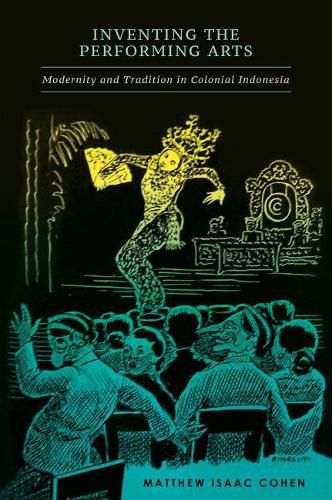Readings Newsletter
Become a Readings Member to make your shopping experience even easier.
Sign in or sign up for free!
You’re not far away from qualifying for FREE standard shipping within Australia
You’ve qualified for FREE standard shipping within Australia
The cart is loading…






Indonesia, with its mix of ethnic cultures, cosmopolitan ethos, and strong national ideology, offers a useful lens for examining the intertwining of tradition and modernity in globalized Asia. In Inventing the Performing Arts, Matthew Isaac Cohen explores the profound change in diverse arts practices from the nineteenth century until 1949. He demonstrates that modern modes of transportation and communication not only brought the Dutch colony of Indonesia into the world economy, but also stimulated the emergence of new art forms and modern attitudes to art, disembedded and remoored traditions, and hybridized foreign and local.
In the nineteenth century, access to novel forms of entertainment, such as the circus, and newspapers, which offered a new language of representation and criticism, wrought fundamental changes in theatrical, musical, and choreographic practices. Musical drama disseminated print literature to largely illiterate audiences starting in the 1870s, and spoken drama in the 1920s became a vehicle for exploring social issues. Twentieth-century institutions-including night fairs, the recording industry, schools, itinerant theatre, churches, cabarets, round-the-world cruises, and amusement parks-generated new ways of making, consuming, and comprehending the performing arts. Concerned over the loss of tradition and
Eastern
values, elites codified folk arts, established cultural preservation associations, and experimented in modern stagings of ancient stories. Urban nationalists excavated the past and amalgamated ethnic cultures in dramatic productions that imagined the Indonesian nation. The Japanese occupation (1942-1945) was brief but significant in cultural impact: plays, songs, and dances promoting anti-imperialism, Asian values, and war-time austerity measures were created by Indonesian intellectuals and artists in collaboration with Japanese and Korean civilian and military personnel. Artists were registered, playscripts censored, training programs developed, and a Cultural Center established.
Based on more than two decades of archival study in Indonesia, Europe, and the United States, this richly detailed, meticulously researched book demonstrates that traditional and modern artistic forms were created and conceived, that is
invented,
in tandem. Intended as a general historical introduction to the performing arts in Indonesia, it will be of great interest to students and scholars of Indonesian performance, Asian traditions and modernities, global arts and culture, and local heritage.
$9.00 standard shipping within Australia
FREE standard shipping within Australia for orders over $100.00
Express & International shipping calculated at checkout
Indonesia, with its mix of ethnic cultures, cosmopolitan ethos, and strong national ideology, offers a useful lens for examining the intertwining of tradition and modernity in globalized Asia. In Inventing the Performing Arts, Matthew Isaac Cohen explores the profound change in diverse arts practices from the nineteenth century until 1949. He demonstrates that modern modes of transportation and communication not only brought the Dutch colony of Indonesia into the world economy, but also stimulated the emergence of new art forms and modern attitudes to art, disembedded and remoored traditions, and hybridized foreign and local.
In the nineteenth century, access to novel forms of entertainment, such as the circus, and newspapers, which offered a new language of representation and criticism, wrought fundamental changes in theatrical, musical, and choreographic practices. Musical drama disseminated print literature to largely illiterate audiences starting in the 1870s, and spoken drama in the 1920s became a vehicle for exploring social issues. Twentieth-century institutions-including night fairs, the recording industry, schools, itinerant theatre, churches, cabarets, round-the-world cruises, and amusement parks-generated new ways of making, consuming, and comprehending the performing arts. Concerned over the loss of tradition and
Eastern
values, elites codified folk arts, established cultural preservation associations, and experimented in modern stagings of ancient stories. Urban nationalists excavated the past and amalgamated ethnic cultures in dramatic productions that imagined the Indonesian nation. The Japanese occupation (1942-1945) was brief but significant in cultural impact: plays, songs, and dances promoting anti-imperialism, Asian values, and war-time austerity measures were created by Indonesian intellectuals and artists in collaboration with Japanese and Korean civilian and military personnel. Artists were registered, playscripts censored, training programs developed, and a Cultural Center established.
Based on more than two decades of archival study in Indonesia, Europe, and the United States, this richly detailed, meticulously researched book demonstrates that traditional and modern artistic forms were created and conceived, that is
invented,
in tandem. Intended as a general historical introduction to the performing arts in Indonesia, it will be of great interest to students and scholars of Indonesian performance, Asian traditions and modernities, global arts and culture, and local heritage.